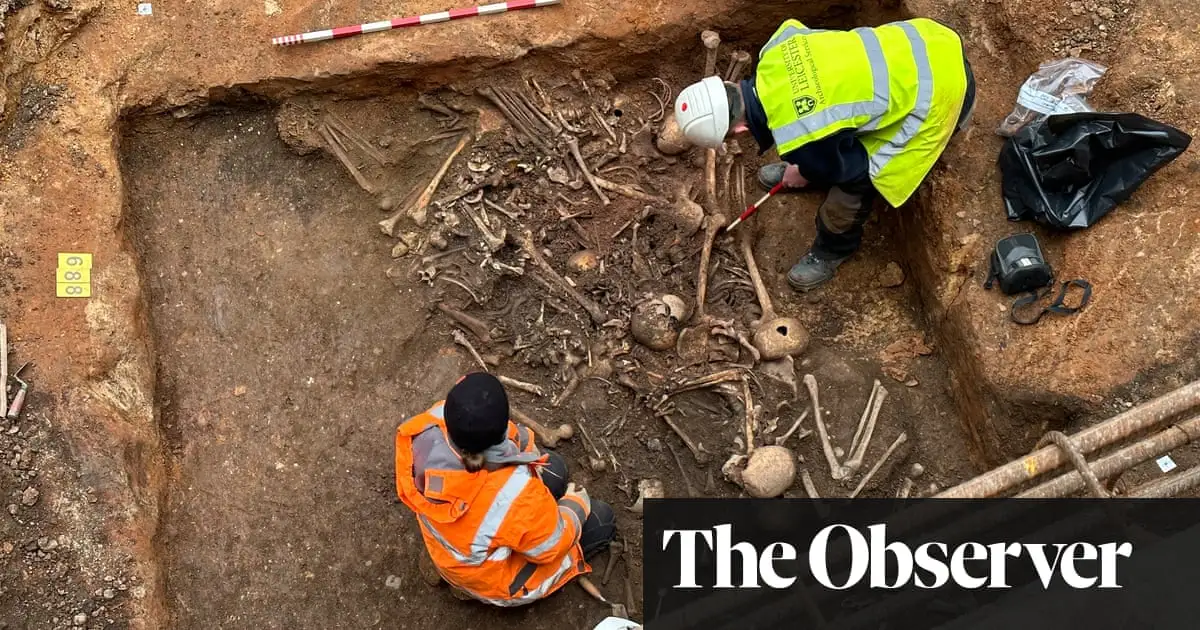- cross-posted to:
- theguardian@rss.ponder.cat
- cross-posted to:
- theguardian@rss.ponder.cat
In gardens a few metres from Leicester Cathedral, archaeologists have made a disturbing discovery. Their excavations have revealed a narrow vertical shaft filled with the remains of 123 men, women and children.
It is one of the largest pit burials ever excavated in the UK, with subsequent research suggesting the bodies were dumped there more than 800 years ago, early in the 12th century.
However, the reasons for putting the corpses in this tiny, ancient shaft remain a mystery.
“Their bones show no signs of violence – which leaves us with two alternative reasons for these deaths: starvation or pestilence,” said Mathew Morris, project officer at Leicester University’s archaeological services. “At the moment, the latter is our main working hypothesis.”
The excavations by Morris and his colleagues suggest the bodies were put into the shaft in three deposits, in rapid succession. “It looks as if successive cartloads of bodies were brought to the shaft and then dropped into it, one load on top of another in a very short space of time,” he said. “In terms of numbers, the people put in there probably represented about 5% of the town’s population.”
…
The Anglo-Saxon Chronicles repeatedly mention great pestilences and fevers, severe mortality, and miserable deaths from hunger and famine in England from the mid-10th century through to the mid-12th century, said Morris. “This mass burial fits within this timeframe and provides physical proof of what was then occurring across the nation.”


